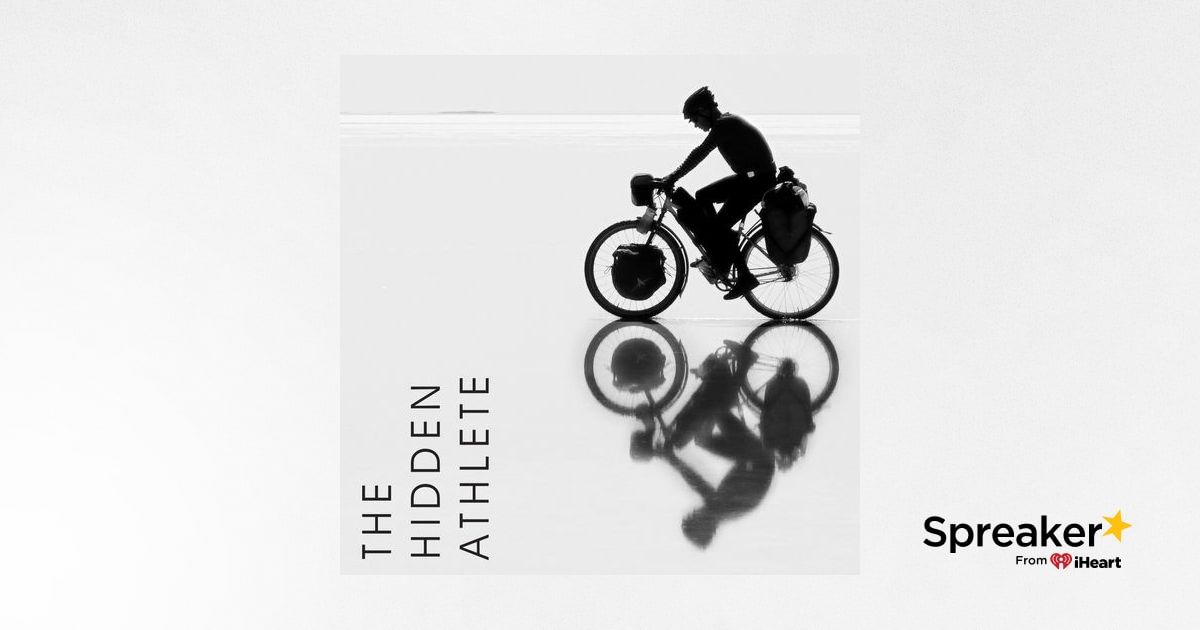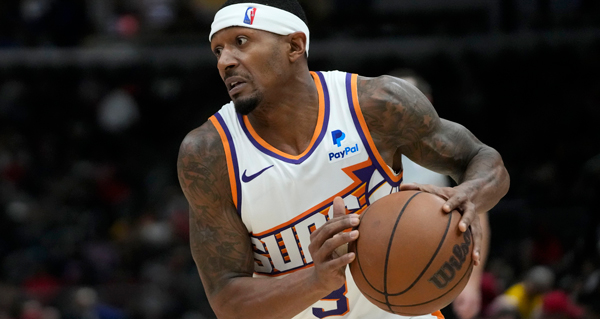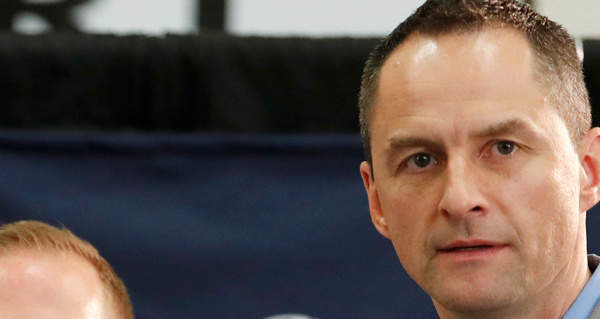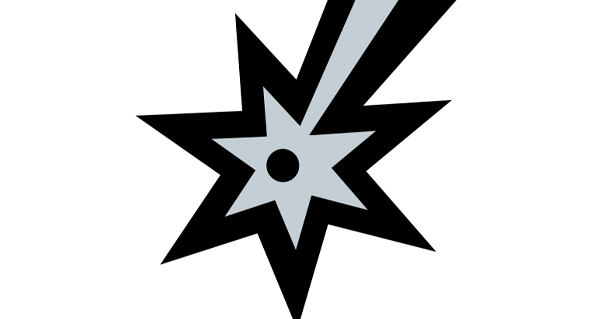PROTECT YOUR DNA WITH QUANTUM TECHNOLOGY
Orgo-Life the new way to the future Advertising by AdpathwayToday’s guest is Hunter Eisenhower, Associate Head Coach for Sports Performance at Arizona State Men’s Basketball. With experience in the NBA and NCAA, Hunter blends force production qualities, data analysis, and variability-driven human training methods to build explosive, adaptable athletes. He’s the creator of the “Force System” and a thought leader in modern athletic performance concepts.
Most athletic performance training is centered around outputs. Movement abilities and qualities are discussed, but there isn’t much quantification process that goes towards an athlete’s raw abilities, such as variable jump strategies alongside stiffness and compliance competencies.
On today’s episode, Hunter shares his approach to offseason prep using general physical means that build that “human strength”—developing capacity alongside movement variability. Hunter also breaks down how he quantifies an athlete’s movement capacities and library, their ability to, balance rigidity and compliance in line with force plate data. We wrap with ideas on foot training and using variable surfaces to meet the demands of dynamic sport. This is a great look at training beyond just big lifts—into the true movement needs of the game.
Today’s episode is brought to you by Hammer Strength and the Just Fly Sports Online Courses
Check out the newest mini-course, Sprint Drills Reloaded on how to maximize sprint drills, their specific strength development, building of major sprint actions, along with better integration of sprint drills into sprinting technique. The special intro sale ends July 1st. (https://justflysports.thinkific.com/courses/sprint-drills-reloaded)
Use the code “justfly25” for 25% off any Lila Exogen wearable resistance training, including the popular Exogen Calf Sleeves. For this offer, head to Lilateam.com

Podcast: Play in new window | Download (Duration: 1:06:45 — 61.2MB) | Embed
Subscribe: Apple Podcasts | Spotify | Amazon Music | Android | Pandora | iHeartRadio | JioSaavn | Podchaser | Email | Deezer | Anghami | Youtube Music | RSS
View more podcast episodes at the podcast homepage. (https://www.just-fly-sports.com/podcast-home/)
Main Points and Key Takeaways
2:00– Sandbags, Suffering, and the Mental Edge
6:00– Let Hard and Fun Coexist in Your Program
10:19– The Importance of Variability in Program Design
12:53– Early Off-Season Program Design
19:27– Rewild Your Program: Crawl, Climb, Wrestle, Hang
23:28– Rethink GPP: Don’t Just Prep to Lift—Prep to Move
30:20– Break Barbell Monotony with Sandbags
34:49– Sleds Are a Movement Tool—Not Just a Finisher
41:03– Measure Movement Options—Not Just Output
48:39– Don’t Confuse Explosive with Efficient
54:31– Train Variability by Changing the Rules
58:05– Cue for Change: Let the Jump Reveal the Strategy
59:50– Start with the Foot—It Tells the Whole Story
1:05:07– Polish Boxes, Stall Bars, and DIY Creativity
Sandbags, Suffering, and the Mental Edge (2:00)
Simple tasks like sandbag holds or dead hangs can reveal a lot about an athlete’s mental state and fatigue tolerance. Sometimes mental state—not just strength—dictates how long you’ll last under tension.
What to try:
- Program weekly “grit sets”: sandbag holds, wall sits, or dead hangs.
- Try them first thing in the session—before the brain can talk itself out of effort.
- Pair them with journaling or a quick “mind state” score: how’d it feel today?
Let Hard and Fun Coexist in Your Program (6:00)
Every session can’t be a competition. But not everyone should be brutal either. Hunter encourages toggling between “suck” and “play.” One makes you tougher, the other keeps you coming back.
What to try:
- Alternate between gamified partner drills and long isometric work during your week.
- Use athlete feedback: which days feel “engaging”? Which feel like “grinding”? Both matter.
- Build polarity into the week—not just into the periodization model.
The Importance of Variability in Program Design (10:19)
Sticking to one type of stimulus flattens the athlete’s capacity. Instead, training should live across a spectrum—fun to miserable, slow to fast, light to heavy. Variability isn’t chaos; it’s a strategic broadening of what athletes can handle.
What to try:
- Run exercises in “opposite pairs”—e.g., heavy squat with playful crawl or flow.
- Apply the same mindset to mental demands: high focus vs. intuitive exploration.
- Create a simple polarity audit: is each block too narrow?
Early Off-Season Program Design (12:53)
Hunter slowed down his summer ramp. Instead of launching into tests and data collection, he started with general work to recalibrate movement quality and tolerance.
What to try:
- Start your offseason with 2 weeks of “human and slow force” exposure: carries, tempo ISOs, bodyweight locomotion.
- Wait to collect output metrics until week 3 or 4.
- Track adaptation with perceived difficulty, not just load or speed.
Rewild Your Program: Crawl, Climb, Wrestle, Hang (19:27)
“Human force” days tap into the primal: crawling, partner work, and awkward carries. It’s low-tech, high-value training that builds resilience, engagement, and coordination without burning out the nervous system.
What to try:
- Design one “human force” day per week using only bodyweight, ropes, and odd objects.
- Include one crawling pattern, one hanging pattern, one partner task.
- Don’t script every detail. Let the session breathe.
Rethink GPP: Don’t Just Prep to Lift—Prep to Move (23:28)
Hunter reframes GPP as developmental, not just preparatory. It’s not about doing more squats—it’s about restoring the movement behaviors kids naturally do: crawling, rolling, climbing. True general prep starts with movement, not loading patterns.
What to try:
- Build mini “return to childhood” warmups: rolls, bear crawls, lateral hops, tag-style games.
- Avoid rushing back to traditional lifts—let athletes explore motion first.
- Revisit bodyweight mastery before loading the bar.
Break Barbell Monotony with Sandbags (30:20)
The shape is awkward, the load is alive, and no two reps are the same. Sandbags demand full-body engagement in a way bars don’t.
What to try:
- Sub in sandbags for barbell hip thrusts, carries, or RDLs for 3–4 weeks.
- Use hug, Zurcher, or over-the-shoulder variations to challenge different patterns.
- Let the instability teach. Don’t coach the chaos out of it.
Sleds Are a Movement Tool—Not Just a Finisher (34:49)
Sleds aren’t just for quads. Multilateral sled work—lateral pushes, backward drags, partner-resisted walks—mimics real sport better than straight-line lifts. It’s a simple way to build capacity in all directions without high impact.
What to try:
- Rotate through backward, lateral, and resisted partner sled variations weekly.
- Use low loads early for rhythm, heavy loads later for grind.
- Treat it as movement prep, not just burn-out.
Measure Movement Options—Not Just Output (41:03)
Hunter’s early work explores how well athletes can manipulate force by comparing compliant vs. rigid landings on force plates. A wider range between the two may signal a richer movement library—something outputs alone don’t reveal.
What to try:
- If using a force plate: run compliant vs. rigid landings off the same box height.
- If not: use video or sound to cue “stick” vs. “melt” landings and watch for variation.
- Log range of strategies, not just the best rep.
Don’t Confuse Explosive with Efficient (48:39)
High outputs don’t always equal high adaptability. Some explosive athletes still move like robots. By contrast, athletes with fluid movement patterns often show more diverse strategies and better court efficiency—even if they don’t jump higher.
What to try:
- Assess curved sprinting, controlled lateral movement, or change of direction with rhythm.
- Track who feels smooth vs. who “grinds.”
- Design movement progressions for both.
Train Variability by Changing the Rules (54:31)
You can’t force fluidity, but you can invite it. Hunter uses unconventional reps (every rep slightly different), varied foot positions, and constraints that challenge coordination. It’s not about chasing chaos—it’s about expanding the athlete’s options.
What to try:
- Set up “every rep different” sessions: change direction, tempo, or position each time.
- Use constraint-based games or asymmetrical setups to encourage problem-solving.
- Prioritize novelty over perfection during general prep phases.
Cue for Change: Let the Jump Reveal the Strategy (58:05)
Not all cues are created equal. By asking athletes to jump “as fast” or “as high” as possible, Hunter teases out how adaptive their strategies really are. Can they shift their approach and still produce meaningful outputs?
What to try:
- Rotate your jump cues weekly: high, fast, stick, reactive.
- Watch for athletes who only excel under one type of demand.
- Use variability in cueing as part of your assessment strategy.
Start with the Foot—It Tells the Whole Story (59:50)
If the foot can’t move, the rest of the body compensates. Hunter introduces foot-focused work (leaning, slant boards, varied stance exposure) as a foundation for variability. It’s not just about the foot—it’s about unlocking the whole kinetic chain.
What to try:
- Use slant boards, lean holds, or angled isos to guide athletes into early and mid-stances.
- Cue foot pressure intentionally: “heel heavy,” “medial contact,” etc.
- Don’t fixate on shape—focus on sensation and control.
Polish Boxes, Stall Bars, and DIY Creativity (1:05:07)
Hunter’s recreating old-school tools like Polish boxes and stall bars to get athletes into novel positions. Leaning variations, single-leg slant work, and dynamic foot exposures are his way of expanding options—one weird angle at a time.
What to try:
- Build low-angle step-ups or rolling foot platforms to mimic Polish box mechanics.
- Add oscillatory reps once isometric holds are stable.
- Rotate positions weekly: medial, lateral, forefoot, heel contact.
Quotes
“The polarity in a training program I think is just like so powerful and so important.” – Hunter Eisenhower
“You, like, learn to appreciate the fun whenever you have to do the suck.” – Hunter Eisenhower
“And the way I structure (early off-season) is we go, we go a human force day, a slow force day, a human force day and a slow force day. And we just do that throughout a four day training schedule.” – Hunter Eisenhower
“A lot of people consider GPP like high volume, squat, hinge, push pull; to me, I think GPP is like going back to the absolute ground level, like basics of just like children, what they would do, they’re crawling, they’re climbing, they’re doing gymnastics and flips, they’re, they’re roughhousing.” – Hunter Eisenhower
“It’s like bigger, faster, stronger. It’s like the, the old adage. Then I was thinking like, is that really the goal with elite athletes? Like, is the goal to increase outputs?.” – Hunter Eisenhower
“If their only strategy that they can rely on is rigidity, maybe I can begin to infuse some of this compliance.” – Hunter Eisenhower
“If your foot can’t get into a position, the rest of your body won’t be able to get into a variable position.”- Hunter Eisenhower
“I love that with like lunge variations because it’s like, no, don’t just step in a different way. Like contort your body in a different position. And I think that that exposed them to positions they’ve probably never been in before.” – Hunter Eisenhower
About Hunter Eisenhower
Hunter Eisenhower is the Head Strength and Conditioning Coach for Arizona State Men’s Basketball, bringing a dynamic, force-based approach to athlete development. With experience in the NBA (Sacramento Kings), G League (Stockton Kings), and several NCAA programs, Hunter blends science, intent, and creativity to enhance performance. He played college basketball at Seattle Pacific University.
At ASU, Hunter applies his “Force System” methodology—a framework combining data analytics, plyometrics, strength training, and play-based movement to build powerful, adaptable athletes. His work emphasizes not just raw output, but how athletes express force in real-game contexts. A frequent podcast guest and educator, Hunter continues to push the field forward while living in Tempe with his wife Leah, and daughter Elsie.
Free Speed Training eBook - Velocity 101

Improving speed is one of the most popular topics in the athletic performance equation. Where there are many ideas and thoughts out there, as to particular training exercises, or setups, the more core aspects of speed training often go without mention. These include the fundamental aspects of what makes an athlete fast, specific sprint-power concepts, the relevance of "3D" motion, motor learning and more.
Velocity 101 will help you take a leap forward in understanding of what makes athletes fast, and how to train it effectively
Invalid email address
We will never sell your information and you can unsubscribe at any time.


 2 weeks ago
1
2 weeks ago
1
















 English (US) ·
English (US) ·  French (CA) ·
French (CA) ·